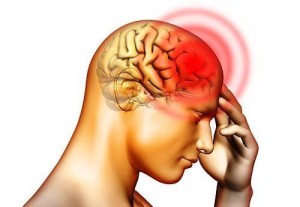The Difference between Migraine and TIA
Perhaps you get a headache from time to time and an occasional mild headache is not much of a concern. However, a headache that occurs frequently, in extreme intensity, indicates something is definitely wrong.
If you have been experiencing severe headaches, then you will agree that it greatly reduces the quality of life. You cannot even think clearly and function properly. It takes a lot of effort just to get through your daily routine. In worst cases, this kind of headache can stop you from functioning normally.
Headache is categorized in different ways. Most people refer to it as a migraine. Migraine is an extreme type of headache that hinders you from living a life. It is usually accompanied by nausea and vomiting, dizziness, irritation and all you want to do is go home, lie in bed and close your eyes. But how come, some people who are having severe headache just collapse? Well, in this case, the person might be having a TIA.
There are a lot of questions when it comes to these matters. Questions such as: What are the difference between Migraine and TIA? Are there any similarities between them? Is there a relation between Migraines and Tia? To know the answers to these questions, read on.
Migraine
Migraine is derived from the Latin word hemicrania which means pain in half part of the head. Thus, the key symptom of migraine is a severe, throbbing headache felt at the front or one side of the head.
- Two Main Types of Migraine
1. Common Migraine
This type of migraine is not accompanied by auras and majority of people experience this type of migraine. Symptoms include severe headache, nausea and sensitivity. It usually lasts between 4 to 72 hours.
2. Classical Migraine
Classical migraine is also known as Migraine with Aura. Attacks usually begin with an aura, consisting of the following signs that gradually develop over a period of 5 to 20 minutes and last less than an hour.
- Visual Disturbances – flashing of lights, sparks, dark patches and the like.
- Tactile Sensations – tingling sensations and heaviness that spread from one part of the body to another.
- Difficulty of speaking – this occurs rarely, but it is still considered as an aura
After the occurrence of the said auras, severe headache accompanied by nausea often precedes, but it can also occur simultaneously with the aura.
 TIA (Transient Ischemic Attack)
TIA (Transient Ischemic Attack)
Transient Ischemic Attack is also known as “mini stroke”. A stroke happens when the blood supply to the brain is insufficient or interrupted. This can be caused due to a blockage (clot) or bleeding in or around the area. A person who is having a TIA can manifest stroke like symptoms that are temporary and usually resolves within 24 hours. This usually doesn’t cause permanent damage to the brain.
Although TIA is temporary and resolves within a period of time, it should not be ignored because it is a warning of an impending massive stroke.
Migraine vs. TIA
| Migraine | TIA | |
| Onset | Develops gradually | Sudden onset |
| Symptoms |
|
|
| Pain Intensity | Pain that intensifies over a period of time that last for hours and even days. | Severe and sudden pain that disappears within a certain period of time. |
Notes:
- Migraine affects women, 15% more than men
- Migraine increases the risk of stroke.
A headache, mild or severe should not be ignored. It is a warning sign that the body is providing you. The worst thing that you can do is hope that the pain will just go away and do nothing about it, or even worse, buy over the counter drugs and self medicate. These actions are likely to lead to further medical problems so be wary on the remedies you are doing. The best thing to do is – at the onset of an aura or a headache, it is important to seek a physician’s advice. It is better to know and treat the source of the problem, rather than just alleviating the signs and symptoms of the condition.
- The Difference between Pemphigus and Pemphigoid - July 9, 2015
- The Difference between Flu and Influenza - July 9, 2015
- The Difference Between a Wound and an Ulcer - June 22, 2015
Search DifferenceBetween.net :
Leave a Response
References :
[0]http://www.migrainetrust.org/factsheet-stroke-and-migraine-10891
[1]http://www.medhelp.org/posts/Neurology/Migraine-Affectations-and-TIA/show/1009697
[2]http://www.strokesmart.org/migraine-or-stroke
[3]http://migraine.com/faqs/how-do-the-symptoms-of-migraine-differ-from-those-of-a-tia-mini-stroke-or-stroke/


